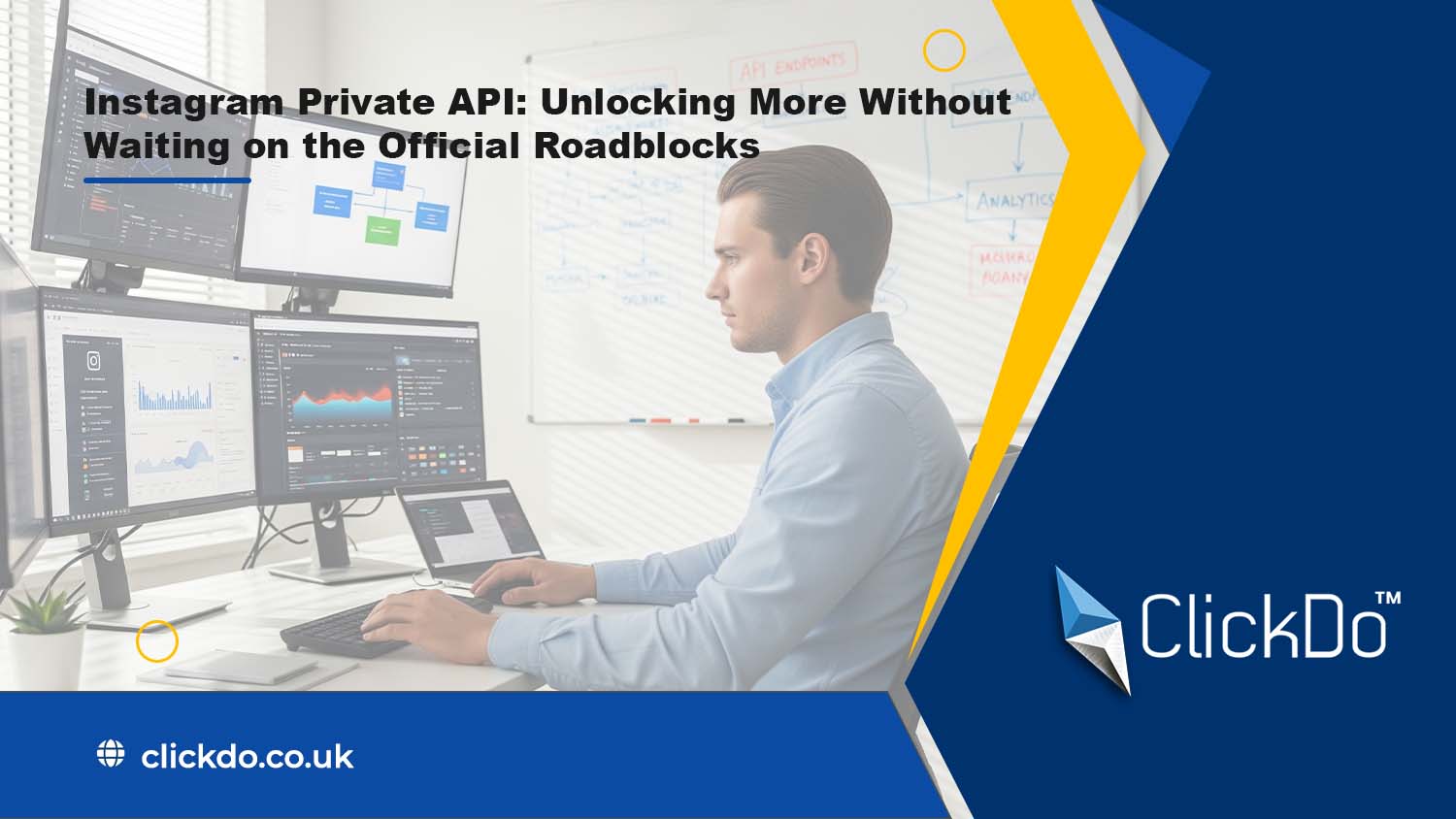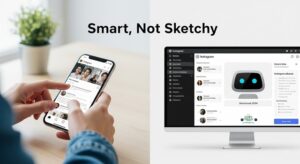
Instagram Private API: Unlocking More Without Waiting on the Official Roadblocks
Anyone who’s worked seriously with Instagram data knows the limitations of the official access routes.
Between rate limits, restricted endpoints, and long application reviews, it often feels like building on sand.
When the Official Tools Just Don’t Cut It

The public Instagram Graph API is fine for simple metrics or basic business account access. But once a project needs deeper engagement – story views, post interactions from non-business users, or real-time tracking – it hits a wall. These aren’t advanced features. They’re core to how people use the platform.
Developers building analytics tools, scheduling platforms, or sentiment trackers have found themselves blocked not by technical complexity but by policy. That frustration is what pushed so many to start looking for something more flexible. That’s why the Instagram private api has gained so much ground – quietly, but with real impact.
The Data You Need, When You Need It
Timing matters. Trends on Instagram don’t wait for approval processes. If a hashtag catches fire or a post goes viral, data pulled two days later is already stale.
One of the biggest appeals of the Instagram private api is how immediate it is. Real-time interactions, updated views, live comment streams – all of that becomes accessible again. And that kind of access is vital for people doing brand monitoring, influencer tracking, or competitive research.
Fewer Permissions, More Possibility
Official APIs often require account ownership or user consent to view even basic data. That’s a problem for research projects or third-party tools that work independently. Private solutions sidestep those blocks without breaching security or privacy – they focus on publicly visible content, just delivered in a usable way.
It’s the difference between seeing what’s already visible in the browser and having no way to structure it into anything actionable.
Why the Word “Private” Isn’t a Red Flag

The term throws some people off. They hear “private” and assume it means sketchy. But that’s not the case here. These APIs aren’t cracking logins or pulling private messages. They don’t break into DMs or hijack credentials.
Instead, they automate access to publicly available content – the same stuff you can view manually – but in a structured, predictable format. Think of it like using a really smart assistant to gather data you could collect yourself if you had unlimited time and patience.
Reliable Infrastructure for Long-Term Projects
One of the biggest challenges with Instagram’s official tools is their unpredictability. Features come and go. Terms change. Entire endpoints disappear after policy shifts. For anyone running a business that depends on stable data, that’s not sustainable.
Private options tend to prioritise infrastructure. They’re built to be reliable, consistent, and independent from changes in the corporate roadmap. That makes them better suited for serious applications, especially those that need to scale.
Access Beyond the Surface Metrics
Instagram’s public APIs mostly offer vanity stats: followers, likes, maybe some profile data. But that barely scratches the surface. Real insights come from patterns – when users post, what kind of content they engage with, and how hashtags evolve in real time.
With broader access, it becomes possible to monitor those trends across accounts, track narrative arcs, and even feed the data into machine learning models for predictive analysis. That’s where the real value lies.
Freedom to Build Without Constant Requests

Tired of sending application forms and waiting weeks for an API review that never gets approved? You’re not alone. The official pipeline often requires business verification, app review, Facebook integration, and a long trail of documentation.
With the Instagram private api, there’s no need to beg for access or explain your use case to a faceless review team. Developers can just build-test faster, iterate sooner, and move without red tape. That’s huge for teams working under tight deadlines or small companies without a legal department on standby.
Supporting More Use Cases Than Meta Intended
The Meta ecosystem and algorithm assume you’re building marketing dashboards or posting tools. That’s it. But real developers want more – community management, sentiment engines, political research, brand intelligence, and social mining. These aren’t fringe use cases. They’re growing fast.
Private APIs make those possible by providing the data that Meta’s platform keeps locked away. That includes post-level metrics, story replays, top comment activity, or influencer content pipelines – things that are technically public but officially inaccessible.
A Smarter Way to Track Influencers
Working with influencer data requires more than just seeing the last five posts. Brands want timelines, frequency analysis, engagement breakdowns, and audience overlap. The official tools barely scratch the surface.
A flexible API opens the door to that deeper layer. Instead of just pulling numbers, it lets analysts see the full posting rhythm, interaction quality, and account evolution – all in a form that feeds directly into actionable reports.
Reducing Risk Without Breaking Rules

Contrary to the myths, using an Instagram private api doesn’t mean hacking or violating terms of service – not if it’s done correctly. A legitimate approach avoids login credentials, respects robots.txt rules, and only accesses what’s already public.
For legal teams, that’s a critical distinction. It means using automation the same way a user would, just faster and smarter. And it means building tools that can survive audits, scale safely, and stay clear of trouble.
Built for Developers, Not Just Marketing Teams
A lot of official tools are aimed at marketers. That’s fine – but developers need something different. They need data that’s clean, endpoints that are well-documented, and the flexibility to work across stacks.
The best private APIs treat developers like partners. They offer good uptime, fast responses, and stable JSON structures. That alone can shave hours off integration time and eliminate entire classes of errors.
Future-Proofing Social Tools
Instagram isn’t going anywhere. But the way developers interact with it will keep changing. Meta will adjust permissions. Policies will shift. Rules will tighten.
The best way to prepare for that isn’t to wait and hope. It’s to build on foundations that won’t move every time the corporate strategy does. Private APIs offer that kind of foundation – stable, dependable, and built for the people doing the work.
Not Just a Shortcut – a Smarter Choice
Choosing a private API over the official route isn’t about cheating the system. It’s about building something that works – today, tomorrow, and six months from now. It’s about speed, flexibility, and autonomy.
For developers, analysts, and businesses that rely on Instagram data, the benefits are clear. And for many, Instagram private api is less of an alternative, and more of the real solution they’ve been waiting for.
Author Profile
- As the Chief of Marketing at the digital marketing agency ClickDo Ltd I blog regularly about technology, education, lifestyle, business and many more topics.
Latest entries
 Digital MarketingOctober 24, 2025The State of AI and Digital Marketing in 2025: A Brief Analysis
Digital MarketingOctober 24, 2025The State of AI and Digital Marketing in 2025: A Brief Analysis Digital MarketingOctober 1, 2025How Dating Sites Climb to the Top of Google: SEO, Link Building, and the Cost of Visibility
Digital MarketingOctober 1, 2025How Dating Sites Climb to the Top of Google: SEO, Link Building, and the Cost of Visibility Digital MarketingSeptember 24, 2025Global vs Local SEO Strategies for UK Companies
Digital MarketingSeptember 24, 2025Global vs Local SEO Strategies for UK Companies Digital MarketingSeptember 23, 2025High-Competition Niches: SEO Tactics That Cut Through the Noise
Digital MarketingSeptember 23, 2025High-Competition Niches: SEO Tactics That Cut Through the Noise

